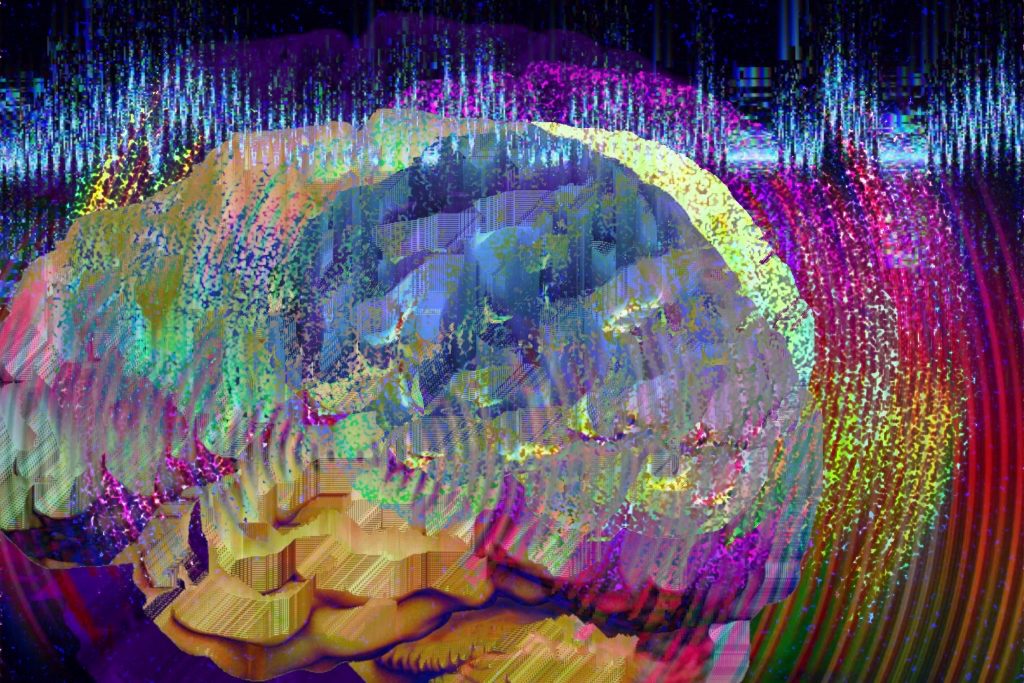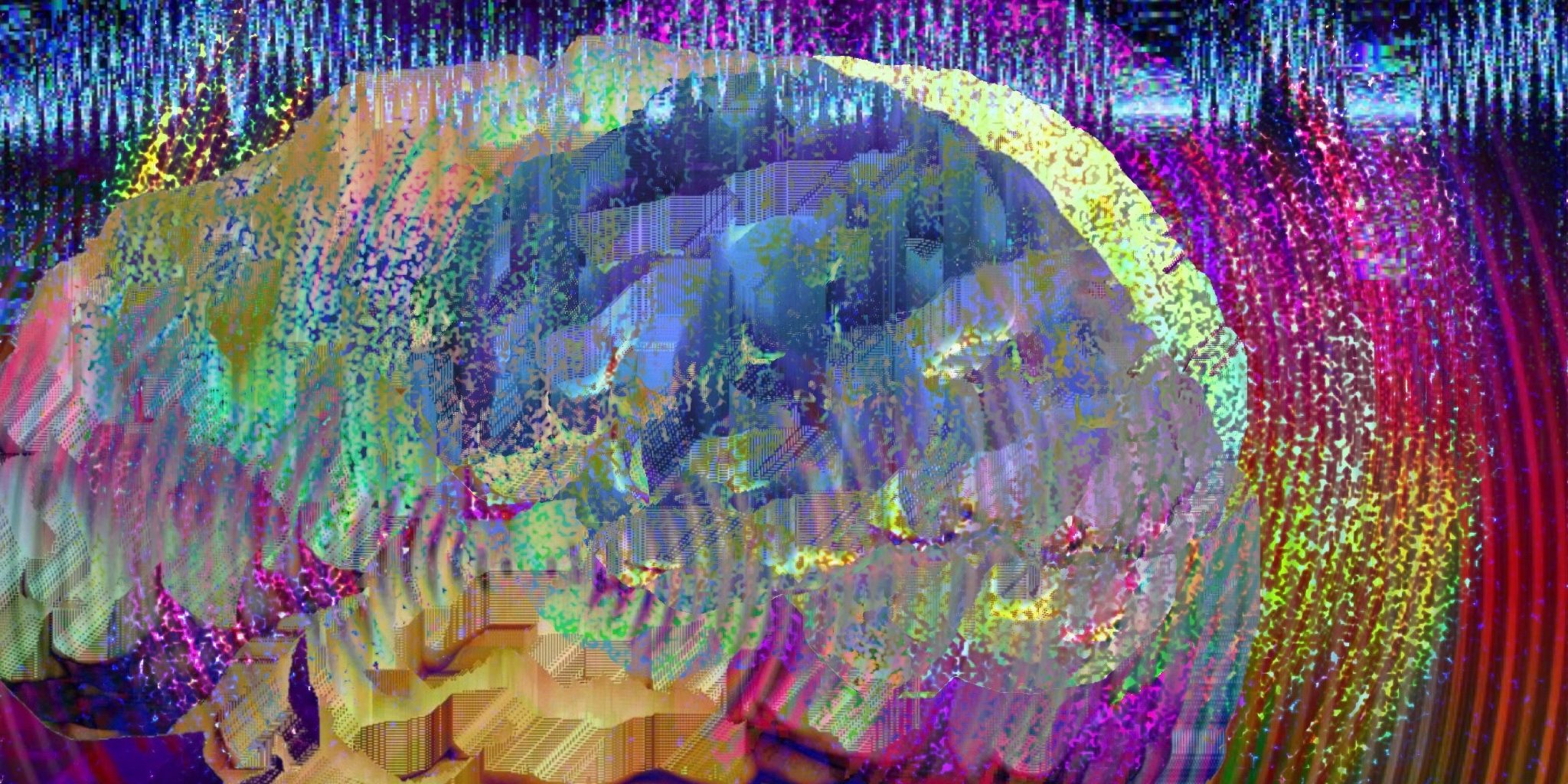Junior year of high school, I was driving around with my best friend, depleting both the gas tank and our day. Pulling into the In-N-Out, they turned to me and said, “I found this song—let me just play it.” Innocently, I shrugged.
The speaker muttered “My face is the front of shop,” stirring the air around us. The car was suddenly ripped by the pulses of Face Shopping, a song by late artist Sophie. Sitting there, giddily overwhelmed, I could do nothing but feign dance moves to the apocalyptic track. “Wild,” I replied. Little did I know that this brush with Face Shopping would drag me, kicking and screaming, into the broken depths of hyperpop.
This moment was my timely introduction to a genre that has gained a lot of popular traction in the last few years. I pulled this definition from Wikipedia: “Hyperpop (sometimes called digicore) is a loosely-defined music movement and microgenre, characterized by a maximalist or exaggerated take on popular music. Artists tagged with the label typically integrate pop and avant-garde sensibilities, drawing on tropes from electronic, hip hop, and dance music.” Since that fateful night in 2019, my music has steadily devolved from that of respectable company into generated explosions without any perceived emotional value. But this is where I ask you to bear with me: hyperpop’s meaning lies in its discordance.
My hot take as a writer in a music org, is that I have never been someone who listened to lyrics. Instead, my desire for lawless noise is actually predictable to the well-seasoned psychiatrist, because I am built to seek turbulence.
Having ADHD affects how I understand and relate to music because being neurodivergent means I process audio differently than a typical brain might. Part of the reason I don’t enjoy music for the message is because I actually don’t process the words fast enough to receive and understand them. Instead, I look for songs with tempo changes and unexpected sounds, because I am excited by all of the shifts to keep up with. Hyperpop is just that.
Here is my truncated scientific explanation of why this happens. I have seen something in passing called an “adhd delay,” which is the moment between when something was said and the time it takes to process and respond in an ADHD brain. As far as I can tell, this “delay” is a colloquial internet term that is an unscientific abridgement of the coincidence of ADHD and auditory processing disorder (APD). While a separate diagnosis, there is often a crossover or coexistence of APD symptoms in people with ADHD. The main difference seems to be that people with ADHD are distracted by the different things that they can hear, whereas those with APD have trouble distinguishing between them. For ADHD, this distraction is the result of the brain’s overcompensation for the lack of dopamine, thus constantly seeking outlets of gratification.
The shortage of dopamine in my brain is an evolutionary oopsie. A glitch, perhaps.
Hyperpop is one facet of a larger current movement around glitch as a political platform and artistic statement in the ever growing technocratic state. Glitch art as a social demonstration cracks seemingly impenetrable systems of technology through the aesthetic of malfunction, embracing the broken as something new. Legacy Russel, a contemporary artist and writer, notes in their work On #GLITCHFEMINISM and The Glitch Feminism Manifesto about the role of the glitch body, or a body that is “broken” according to societal standards. The neurotypical, able-bodied, heterosexual white man has always been the powerful, the unquestioned. “Glitched bodies—those blurry bodies that aim to exist in a space between—cannot be translated via normative standards and, in turn, are categorized as monstrous. Glitched bodies pose a threat to social order: they cannot be programmed.”
Most of the discourse about the politics of hyperpop is its meaning and representation in queer communities. Queer existence challenges the patriarchal binary, and glitch is a translatable language for identifying with error. This ideology is not demonizing glitches, rather recognizing them as a part of modernity that unintentionally reveals infrastructure, and catches attention by being unexpected. Neurodiverse existence, too, challenges the recognized power of the typical mind, calling eyes by existing as a “glitched body.”
So, not only is there a softly scientific explanation behind why people with neurodiverse brains might be drawn to tangled music and media like hyperpop, but the ideological interpretations of the genre align with the neurodiverse reality of settling outside the accepted standard. Hyperpop is choking the model for popular music, forming a mainstream genre that exists in opposition with much of its surroundings. It is splitting a new space where defects are harnessed and celebrated. And I think that’s pretty cool.
Needless to say, the experience of music is unique to every mind, but it’s interesting to take a microscope to why these differences in taste might exist. I write this stream of consciousness not to reduce musical and cultural experience to biological definitions and easy to check boxes. I just wanted to share my personal observations with others who might find similar refuge in understanding why they feel or attach to certain music. So until next time.

Art by Skye Schoenhoeft




